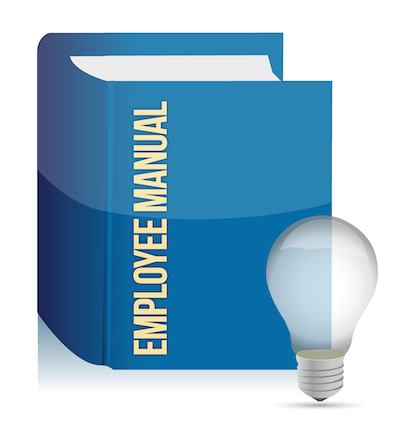By Dee Anna D. Hays, Ogletree Deakins
Working from home (or telecommuting) is not a new concept. However, its prevalence increased through the COVID-19 pandemic and has since become a permanent fixture for many workforces. During the same time, many employers have been busy dealing with staffing issues, safety concerns, and COVID-19-related legislation or litigation. There may have been little to no time to address handbook policies. This article will highlight five areas that may warrant special attention for the hybrid workforce in 2022.
- Telecommuting and Remote Work Policies
Many employers may have experienced the trend of employees scattering to different states or may be hiring workers in states where they have not previously conducted business. Though an attractive recruiting, retention, and cost-saving tool for many employers, remote work has numerous multistate compliance implications, especially as employees relocate to different states or new out-of-state employees are hired. Significant legal predicaments for both employers and their workforces include employee onboarding, business expense reimbursement, state tax, state unemployment withholding, privacy and data security, and termination issues. When expanding to new jurisdictions, employers may also need to update discrimination and harassment, wage and hour, paid sick and other leave policies, among others.
Employers might also consider adding a remote work policy to the handbook for employees who request or are requested or required to work remotely. The handbook policy could outline the approval process and general expectations for individuals working remotely. The policy can reiterate that entering into a temporary remote working relationship is solely at the discretion of the Company and may not be feasible for all job positions. Working remotely is not a contractual right, entitlement, or employee benefit and does not change the terms and conditions of employment.
Further, employers may want to implement or update separate remote work agreements with employees that address details beyond the scope of an employee handbook. Each employee who will be working remotely should execute such an agreement to ensure the expectations are clear. Employers may also use these agreements to enforce restrictive covenants, trade secrets, and other similar legal obligations.
- Wage and Hour Policies
As more employees are continuing to work remotely, it may be more difficult for employers to observe work hours of non-exempt employees. New work arrangements might necessitate an update to current time keeping policies and procedures to ensure non-exempt employees are accurately reporting all hours worked and understand what prior approval, if any, is required to work overtime hours. Policies should strictly prohibit working off the clock, and should require employees to thoroughly review their time records and pay records to ensure accuracy.
Further, if an employer requires remote work from an employee who is not set up to do so, the employer may need to reimburse the employee for any additional phone, internet, or other expenses incurred (beyond what the employee would otherwise have paid for his or her personal use) to enable the employee to telecommute at the company’s request. While not directly addressing whether employers must reimburse home expenses used in the course of telecommuting, the U.S. Department of Labor (“DOL”) has advised that if employers require a non-exempt employee to work from home, they may not require the non-exempt employee to pay for business expenses, where doing so reduces the non-exempt employee’s earnings below the required minimum wage or overtime compensation. For exempt employees not subject to required minimum wage or overtime requirements, additional phone, internet, or other expenses may be viewed as impermissible deductions under the Fair Labor Standards Act’s (“FLSA”) “salary” basis test. In addition, employers may not require employees to cover such expenses when the telecommuting arrangement is being offered as an Americans with Disabilities Act or similar legally required accommodation.
Wage and hour litigation continues to be the most frequently filed type of employment litigation, and related retaliation claims are increasing. Many employee handbooks do not address who employees should contact with any concerns regarding their hours and pay, leaving employers vulnerable to the argument that the employee did not have an avenue to resolve complaints. In addition, handbooks should include a provision that states employees who come forward with complaints about their hours or pay will not be retaliated against. While this provision can be found in almost every policy prohibiting discrimination and sexual harassment, it is often forgotten in the context of complaints regarding wages.
- Workplace Safety and Health Policies
The COVID-19 pandemic pushed the U.S. Occupational Safety and Health Administration (“OSHA”) into the spotlight, and workplace safety and health will be a continued priority of President Biden’s administration. In fact, on January 13, 2022, U.S. Secretary of Labor Marty Walsh stated, “OSHA will do everything in its existing authority to hold businesses accountable for protecting workers, including under the COVID-19 National Emphasis Program and General Duty Clause.” OSHA is also pursuing a permanent standard for the healthcare industry to protect workers from COVID-19 hazards and is considering broader infectious disease rulemaking. The agency has launched a COVID-19 focused inspection initiative limited to certain healthcare facilities that will cover the three-month period from March 9, 2022 to June 9, 2022. To date, OSHA has fined employers over $4,034,288 through COVID-related citations. Therefore, all employers may want to appropriately address workplace safety and health in their handbooks and in more detailed procedures that may be best kept separately from the handbook.
A handbook safety and health policy should not take the place of separate safety manuals or detailed procedures. Instead, the handbook policy could include more general information regarding: the responsibility of every employee to work safely, follow all safety and health procedures applicable to their jobs (and how to access them), to report any potential safety and health hazards in the workplace, and to report any work-related accidents, injuries, and illnesses as soon as reasonably possible. The handbook policy might also include a clear reporting procedure and a provision that states employees will not be retaliated against for making such reports. Because of the rapidly evolving guidance and legislation regarding COVID, employers may want to keep COVID-related policies and procedures separate from the handbook. This would eliminate the need to update the handbook each time COVID policies change, which may be an administrative burden for some employers.
- NLRB and Handbook Policies
Now that Democrats once again have a majority on the National Labor Relations Board (“NLRB”), it will come as no surprise that they may seek to roll back current Trump-era Board policies and return to policies that favor employees and labor unions. We can reasonably expect the pendulum to swing back toward the Obama administration practice of issuing decisions scrutinizing handbook policies under the National Labor Relations Act (“NLRA”). Thus, employers should watch out for any NLRB decisions on this issue and review handbook polices, including social media/IT, dress code, conflict of interest confidentiality, and related policies, to ensure compliance.
- Contractual Issues to Consider
Including a disclaimer at the beginning of the handbook expressly stating it does not constitute a contract and reiterating the at-will nature of the employment relationship can be an important tool in defending claims. Similarly, contracts and other legally binding agreements should not be added to the handbook. This includes non-compete, non-solicitation, and non-disclosure clauses as well as arbitration agreements and other releases of liability, which should be kept separate from the handbook to ensure enforceability and avoid the entire handbook being construed as a contract.

